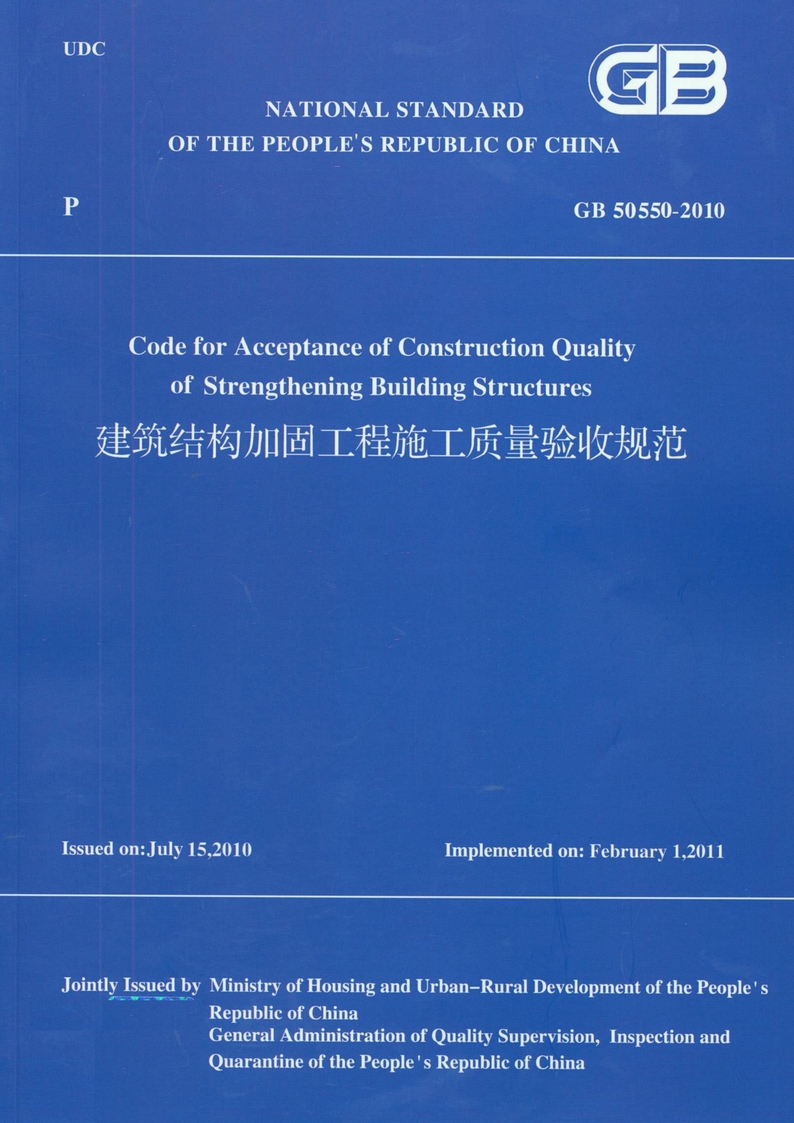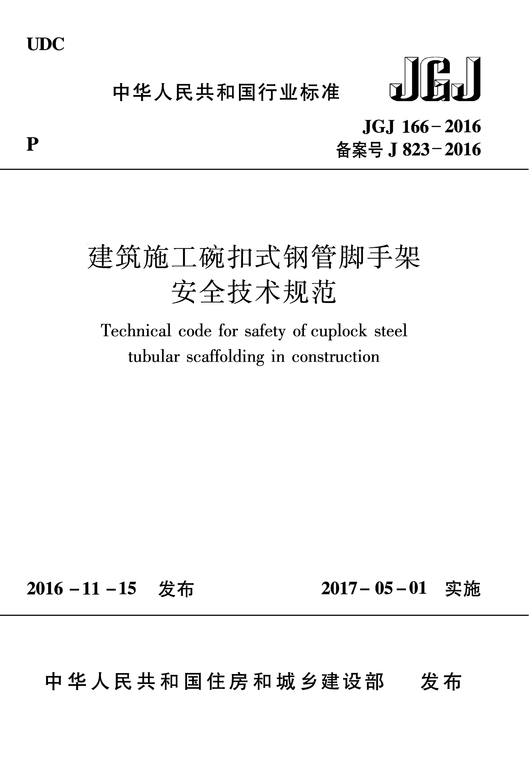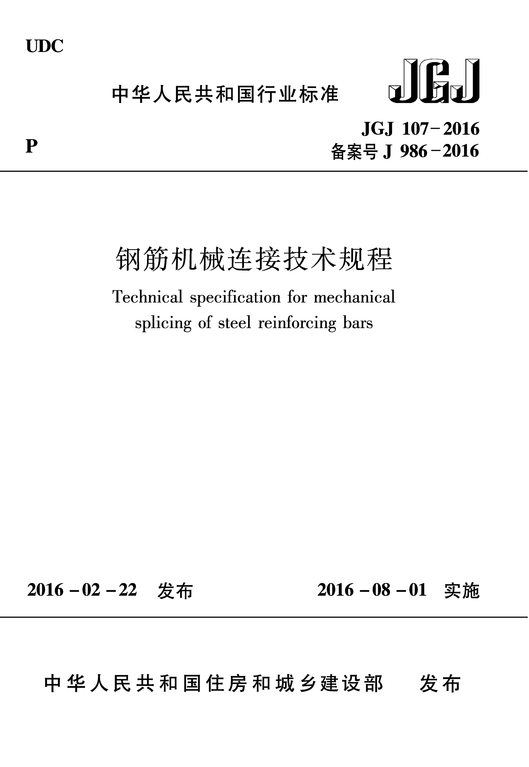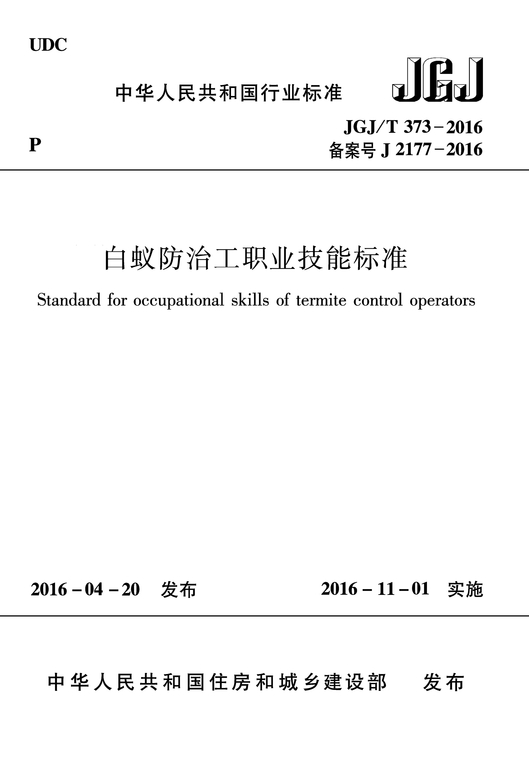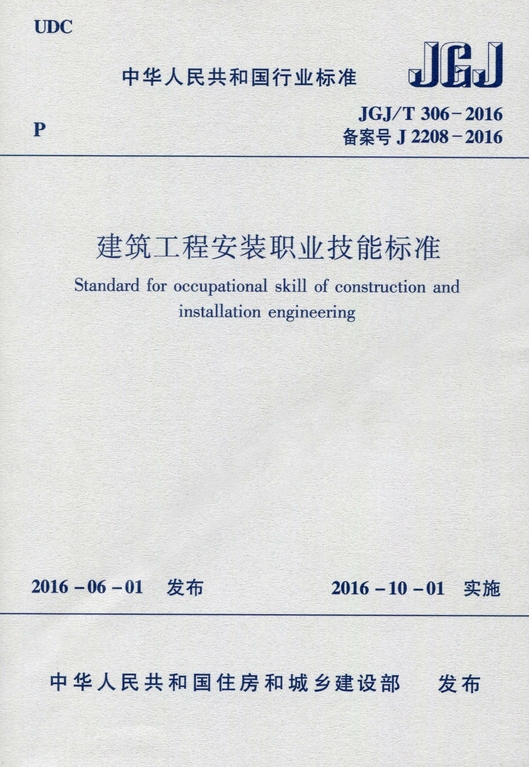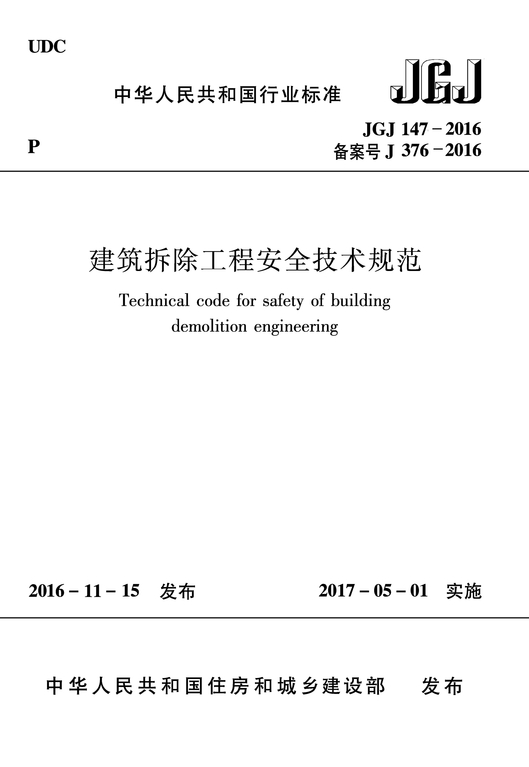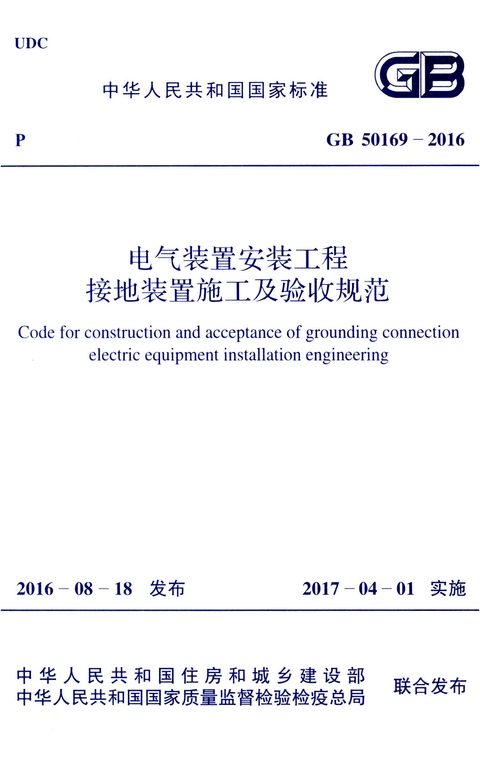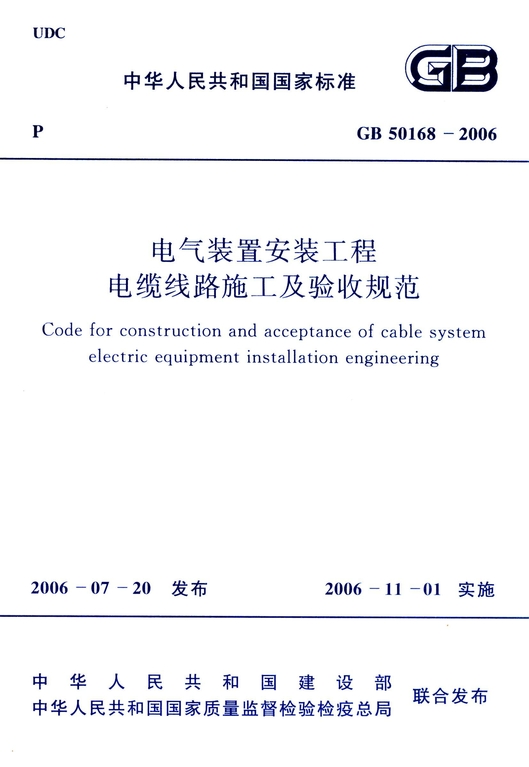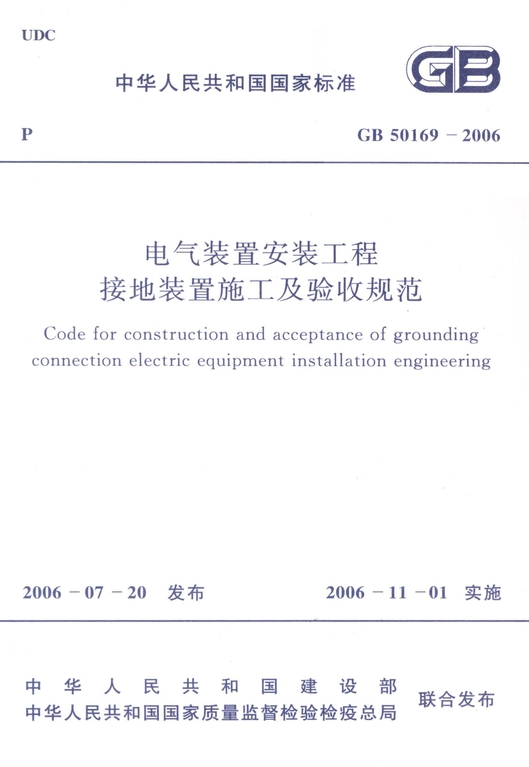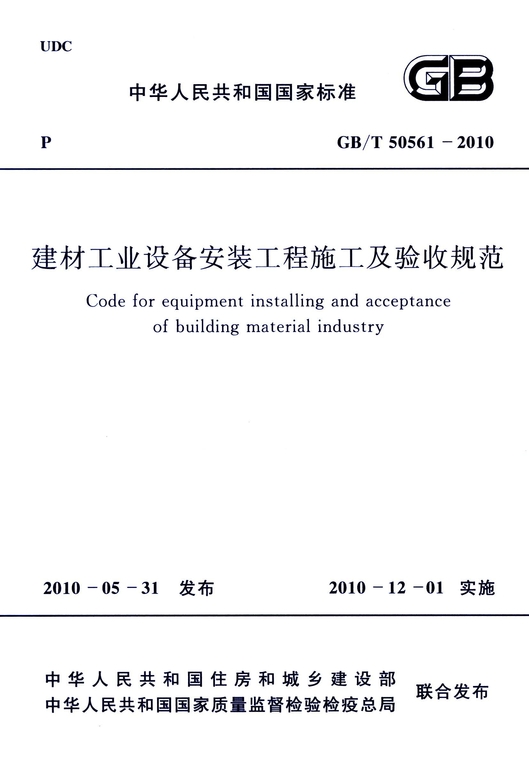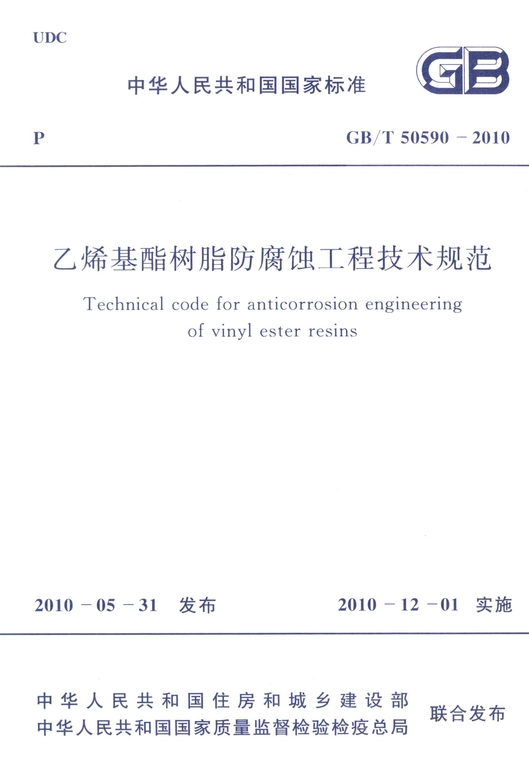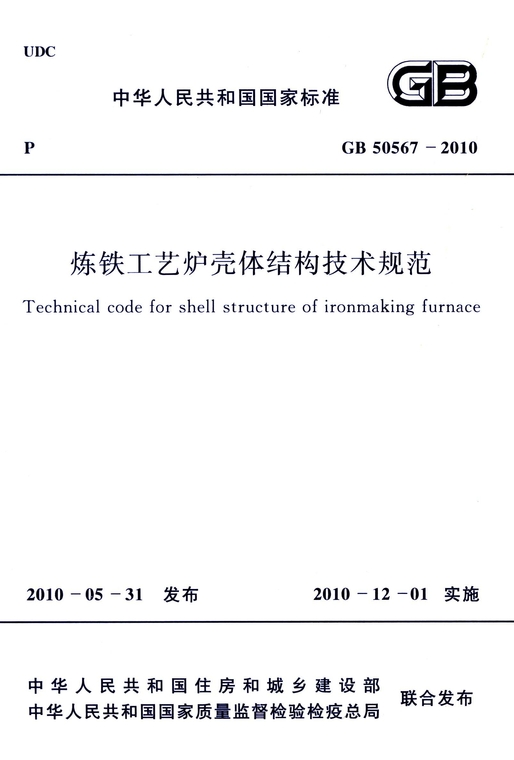发布日期:2010-07-15
实施日期:2011-02-01
主编部门:
主编单位:
主要起草人:Sun Qianyuan,Liang Shuang,Liang Tan,Wu Shanneng,Huang Xingdi,Lin Wenxiu,Bu Liangtao,Cui Shiqi,Zheng Jianlan,Cheng Bo,Zhang Xin,Mo Qunsu,Li Mingzhu,Jiang Songyan,Lu Tonghe,Pan Yanping,Wei Jiandong,Chen Kerong,Feng Honghao,Wang Limin,Zhang Chengying,Chen Youming,Zhang Ye,Xu Dexin,Li Liping,Zhang Shouwen,Xiao Wen,Wang Conghui,Zhou Ji,Wang Xiaobo,Hou Faliang,Peng Bo,Zhang Tanxian,Zhou Haiming,He Yingming,Liu Yannian
出版社:中国建筑工业出版社
标准书号:GB 50550-2010
出版时间:2014-09-01
During the process of formulating this code,the code drafting group conducted monographic studies on various structure strengthening construction methods;carried out extensive investigations and analysis as well as proving tests on key projects;summarized the construction experiences in strengthening building structures of China in the past 15 years and carried out comparative analysis of and referred to the foreign advanced standards and codes.Based on which,it extensively asked for the opinions of organizations concerned and social public in various ways;conducted evaluation on the experimental application and strengthening effects of new strengthening materials and construction processes.Thereafter modified the significant problems repeatedly and finalized this code through review.
This code is applicable to the construction process control and construction quality acceptance of the strengthening engineering of concrete structure,masonry structure and steel structure.
This code was formulated by Sichuan Institute of Building Research jointly with the relevant colleges and universities,scientific research,quality supervision and construction organizations according to the tasks and requirements of Document Jian Biao [2003] No.102 issued by the Ministry of Construction (MOC)-Notice on Printing the Development and Revision Plan of National Engineering Construction Standards from2002to2003.
During the process of formulating this code,the code drafting group conducted monographic studies on various structure strengthening construction methods;carried out extensive investigations and analysis as well as proving tests on key projects;summarized the construction experiences in strengthening building structures of China in the past 15 years and carried out comparative analysis of and referred to the foreign advanced standards and codes.Based on which,it extensively asked for the opinions of organizations concerned and social public in various ways;conducted evaluation on the experimental application and strengthening effects of new strengthening materials and construction processes.Thereafter modified the significant problems repeatedly and finalized this code through review.
This code mainly covers:basic requirement,materials,strengthening with enlarged concrete sections,strengthening with replaced RC structural elements,RC elements strengthened with wrapped wires,RC member strengthened by externally applied prestress,strengthening by externally bonded or wrapped shaped steel,strengthening by externally bonded fiber reinforced polymers,strengthening by bonding steel plates,strengthening by polymer motar reinforced with steel wire mesh,strengthening concrete or masonry members by steel bar mesh and motar layer,strengthening masonry columns with prestressed rods,strengthening steel members with enlarged section,strengthening welds in steel structures,repair cracks in steel structures,repair cracks in concrete and masonry structures,plant rebars,anchors,grouts,acceptance of building structure strengthening engineering and the relevant appendixes.
The provisions printed in bold type in this code are compulsory and must be enforced strictly.
Ministry of Housing and Urban-Rural Development is in charge of the administration of this code and the explanation of the compulsory provisions;Sichuan Institute of Building Research is responsible for the explanation of specific technical contents.
All relevant organizations are kindly requested to sum up your experiences and accumulate data and information in actual practices during the process of implementing this code so as to improve the quality of this code.The relevant opinions and advice,whenever necessary,can be sent to Building Appraisal and Strengthening Regulation Management Committee of the Ministry of Housing and Urban-Rural Development (in Sichuan Institute of Building Research) (Address:No.55,North Third Section,First Ring Road,Chengdu City,610081,China;http://www.astcc.com).
Chief Development Organization of this code:Sichuan Institute of Building Research
Participating Development Organizations:
Tongji University
Hunan University
Wuhan University
Fuzhou University
Shandong Jianzhu University
Dalian Institute of Chemical Physics,Chinese Academy of Sciences
Shandong Provincial Academy of Building Research
Liaoning Building Science Reach Institute
Chongqing Institute of Building Research
Shanghai Construction Project Quality Supervision Station
Shandong Provincial Construction Engineering Quality Supervision Station
Chengdu Construction Project Quality Supervision Center
Haikou Construction Project Quality Supervision Center
Xiamen Construction Engineering Quality and Safety Supervision Station
Shanghai Jiaguhang Constructional Technology Engineering Co.,Ltd.
Araldite Advanced Chemical materials (Guangdong) Co.,Ltd.
Xiamen Zhonglian Structural Adhesion Co.,Ltd.
Construction Technology Engineering Corporation of Tongji University
Dalian Kaihua new technology engineering Co.,Ltd.
China Huaxi Enterprises Corporation
Fischer Fixings Co.,Ltd.
Hilti (China) Co.,Ltd.
Jiangsu Dongnan Special Engineering and Technology Co.,Ltd.
Shanghai Xiegu Construction Material Co.,Ltd.
Wuhan Changjiang Reinforcement Technology Co.,Ltd.
Hubei Desheng Strengthening Limited Company for Structure Engineering
Changsha Good Bond Construction Technic Development Co.,Ltd.
Shanghai Yichang Carbon Fiber Material Co.,Ltd.
Shanghai Tonghua Special Civil Engineering Co.,Ltd.
Chief Drafting Staff:
Sun Qianyuan Liang Shuang Liang Tan Wu Shanneng Huang Xingdi Lin Wenxiu Bu Liangtao Cui Shiqi Zheng Jianlan Cheng Bo Zhang Xin Mo Qunsu Li Mingzhu Jiang Songyan Lu Tonghe Pan Yanping Wei Jiandong Chen Kerong Feng Honghao Wang Limin Zhang Chengying Chen Youming Zhang Ye Xu Dexin Li Liping Zhang Shouwen Xiao Wen Wang Conghui Zhou Ji Wang Xiaobo Hou Faliang Peng Bo Zhang Tanxian Zhou Haiming He Yingming Liu Yannian
Chief Examiners:
Liu Xila Dai Baocheng Gao Xiaowang Zhang Jiaqi Shen Kun Li Derong Jiang Shoushi Wang Qinglin Wan Haiying Tang Daixin Xu Gonghe Cheng Yizu Chen Yuexi Luo Jinyuan
Announcement of the Ministry of Housing and Urban-Rural Development of the People's Republic of China
No.683
Announcement on Publishing the National Standard Code for Acceptance of Construction Quality of Strengthening Building Structures
Code for Acceptance of Construction Quality of Strengthening Building Structures has been approved as a national standard with a serial number of GB 50550-2010 and shall be implemented from February 1,2011.Herein,Articles 4.1.1, 4.1.2, 4.2.1, 4.2.2, 4.2.3, 4.2.5, 4.2.6, 4.3.1, 4.4.1, 4.4.5, 4.5.1, 4.5.2, 4.7.1, 4.9.2, 4.11.1, 5.3.2, 5.4.2, 6.5.1, 8.2.1, 10.4.2, 11.4.2, 12.4.1, 12.5.1, 12.5.3, 13.3.6, 13.4.1, 13.4.3, 15.1.5, 15.4.1, 15.5.1, 16.1.5, 19.4.1, 20.3.1 and 21.4.3 are compulsory provisions and must be enforced strictly.
Authorized by the Standard Rating Research Institute of the Ministry of Housing and Urban-Rural Development of the People's Republic of China,this code is published by China Architecture&Building Press.
Ministry of Housing and Urban-Rural Development of the People's Republic of China
July 15,2010
目录
Announcement of the Ministry of Housing and Urban-Rural Development of the People's Republic of China
Foreword
1 General Provision
2 Terms
2.1 General Terms
2.2 Material Terms
2.3 Construction Terms
3 Basic Requirement
4 Materials
4.1 Concrete Materials
4.2 Steels
4.3 Welding Materials
4.4 Structural Adhesives
4.5 Fiber Reinforced Polymers
4.6 Cements and Sands
4.7 Polymer Motar
4.8 Crack Repairs with Injections
4.9 Interfacial Adhesives for Concrete
4.10 Grouts for Structural Strengthening
4.11 Anchors
5 Strengthening with Enlarged Concrete Sections
5.1 General Requirement
5.2 Interface Treatment
5.3 Enlarge Concrete Section
5.4 Inspection of Construction Quality
6 Strengthening with Replaced RC Structural Elements
6.1 General Requirement
6.2 Real-time Control for Unloading
6.3 Local removal and Interface Treatment of Concrete
6.4 Replacement of Concrete
6.5 Inspection of Construction Quality
7 RC Elements Strengthened with Wrapped Wires
7.1 General Requirement
7.2 Interface Treatment
7.3 Wrapping with Wires
7.4 Inspection of Construction Quality
8 RC Member Strengthened by Externally Applied Prestress
8.1 General Requirement
8.2 Fabrication and Installation
8.3 Pre-stredding Tension
8.4 Inspection of Construction Quality
9 Strengthening by Externally Bonded or Wrapped Shaped Steel
9.1 General Requirement
9.2 Fabrication of Steel Skeleton
9.3 Surface Treatment
9.4 Installation and Welding of Steel Skeleton
9.5 Injection of Grouts
9.6 Inspection of Construction Quality
10 Strengthening by Externally Bonded Fiber Reinforced Polymers
10.1 General Requirement
10.2 Interface Treatment
10.3 Bonding of Fiber Reinforced Polymers
10.4 Inspection of Construction Quality
11 Strengthening by Bonding Steel Plates
11.1 General Requirement
11.2 Interface Treatment
11.3 Bonding of Steel Plates
11.4 Inspection of Construction Quality
12 Strengthening by Polymer Motar Reinforced with Steel Wire Mesh
12.1 General Requirement
12.2 Interface Treatment
12.3 Installation of Steel Wire Mesh
12.4 Application of Polymer Motar
12.5 Inspection of Construction Quality
13 Strengthening Concrete or Masonry Members by Steel Bar Mesh and Motar Layer
13.1 General Requirement
13.2 Interface Treatment
13.3 Installation of Steel Bar Meshes and Construction of Motar Layers
13.4 Inspection of Construction Quality
14 Strengthening Masonry Columns with Prestressed Rods
14.1 General Requirement
14.2 Interface Treatment
14.3 Fabrication of Rods
14.4 Installation and Stress of Rods
14.5 Inspection of Construction Quality
15 Strengthening Steel Members with Enlarged Section
15.1 General Requirements
15.2 Interface Treatment
15.3 Fabrication of Steel Elements
15.4 Installation and Slicing Construction of Newly-added Steel Elements
15.5 Inspection of Construction Quality
16 Strengthening Welds in Steel Structures
16.1 General Requirement
16.2 Treatment of Welding Surface
16.3 Strengthening of Welding
16.4 Quality Inspection of Welding
17 Repair Cracks in Steel Structures
17.1 General Requirement
17.2 Strengthening of Welds and Quality Inspection
18 Repair Cracks in Concrete and Masonry Structures
18.1 General Requirement
18.2 Surface Treatment
18.3 Seal Crack Surfaces
18.4 Fill Cracks with Flexible Materials
18.5 Inject Cracks with Epoxy
18.6 Quality Inspection
19 Plant Rebars
19.1 General Requirement
19.2 Surface Treatment
19.3 Plant Rebars
19.4 Quality Inspection of Construction
20 Anchors
20.1 General Requirement
20.2 Installation of Anchors
20.3 Quality Inspection
21 Grouts
21.1 General Requirement
21.2 Safety Review of Construction Drawings
21.3 Surface Treatment
21.4 Application of Grouts
21.5 Quality Inspection
22 Acceptance of Building Structure Strengthening Engineering
Appendix A Division of Sub-subsection Projects and Subitem in Structural Strengthening Engineering
Appendix B Records of Quality Inspection
Appendix C Technical Specification for High-pressure Water Jet
Appendix D Sample Specification for Site Repeat Test of Materials or Products for Strengthening
Appendix E Specifications for Laboratory Test and Evaluation of Normal Tensile Bonding Strength between Strengthening Material and Substrate Bonded by Adhesive Material
Appendix F Specifications for Test and Evaluation of Debonding Performance of Structural Adhesives under T-Peel Impacts
Appendix G Test of Non-volatile Matter of Structural Adhesives
Appendix H Test of Durability Performance of Structural Adhesive under Circles of Wet and Heat
Appendix J Quick Test on Site of Durability Performance of Structural Adhesive under Circles of Wet and Heat
Appendix K Test Method of Initial Viscosity
Appendix L Determination of Thixotropic Index of Structural Adhesive
Appendix M Quick Determination of Number of Carbon Fiber Reinforced Polymers M.0.1 Application scope
Appendix N Test Methods of Interface Shear Strength of Fiber Reinforced Polymers
Appendix P Test Method of Split Tensile Strength of Anchoring Type Structural Adhesives and Polymer Motar
Appendix Q Test Method of Flexural Strength of Motar and Grout for Structural Strengthening
Appendix R Test Method of Shear Strength under Tension of Polymer Motar and Composite Motar (Steel Sleeve Method)
Appendix S Test and Determination of Shear Bonding Strength of Structural Interfacial Adhesives (Agents)
Appendix T Sampling Rules and Determination on Site of Newly Added Concrete Strength
Appendix U Test and Determination of Normal Tensile Bonding Strength between Bonded Material and Substrate
Appendix V Provisions on Compressive Strength Determination for the Outer Added Mortar Surface Layer of Bearing Member with Rebounding Method
Appendix W On Site Test and Determination of Anchorage Capacity
Appendix Y Steel Bar Inhibitor Application Requirements
Explanation of Wording in This Code
List of Quoted Standards
4.1.1 When the cement used for structure strengthening engineering approaching the constructionsite, the variety, grade, package number or bulk bin number, and date of production of the cement shall be checked, and the strength, stability and other necessary performance indexes of the cement also shall be carried out with evidential sampling repeat test.The variety and strength grade of cement must comply with the requirements of the current national standard GB 50367Design Code for Strengthening Concrete Structureand the design; the cement quality must meet the requirements of the current national standards GB 175Common Portland Cementand GB 199Rapid Harding Portland Cement.
As for the concrete for strengthening, the cement with unqualified stability the cement containing chloride, aged cement or damped cement are strictly forbidden.
Inspection quantity: The cement of the same manufacturer, same grade, same variety, same batch number and same approaching time shall be divided into lots and each lot contains 30t(those less than 30t shall be counted as 30t),and each lot shall be carried out with evidential sampling at least once.
Inspection method: Checking the qualification certificate, delivery inspection report and site repeat test report of product.
4.2.1 The variety, specification and property of the steel bars for structure strengthening shall meetthe design requirements.When approaching the construction site, the steel bars shall be carried out with mechanical property repeat test through evidential sampling respectively according to the current national standards GB 1499.1Steel for the Reinforcement of Concrete-Part1:Hot Rolled Plain Bars,GB 1499.2Steel for the Reinforcement of Concrete-Part2:Hot Rolled Ribbed Bars,GB/T 13014Remained Heat Treatment Ribbed Steel Bars for the Reinforcement of Concreteand GB/T 5224Steel Strand for Prestressed Concrete.The quality of steel bars not only must meet the requirements of the corresponding standards, but also shall meet the following requirements:
1 As for the frame structure with requirements on seismic fortification, the measured strength test value of the steel bar bearing longitudinal force shall meet the requirements of the current national standard GB 50204Code for Acceptance of Constructional Quality of Concrete Structures;
2 In any ease, the bearing steel bars shall not be recycled steel bars or the steel bars with uncertain steel grade.
Inspection quantity: in accordance with the approaching lots and the requirements of Appendix D in this code.
Inspection method: Checking the qualification certificate, delivery inspection report and site repeat test report of product.
4.2.2 Thevarieties,specificationsandcharacteristicsofthesectionsteelsandsteelplatesforstructure strengthening and of the fasteners for connecting the steels and steel plates shall meet the design requirements and those specified in the current national standards GB/T 700Carbon Structural Steels,GB/T 1591High Strength Low Alloy Structural Steelsand GB/T 3098Mechanical Properties of Fastenersas well as those specified in the relevant product standards.Secondary steels and the steels and fasteners from uncertain sources are strictly forbidden to use.
When approaching the construction site, the section steels and steel plates and the fasteners for connecting shall be carried out with safety performance repeat test through evidential sampling according to the requirements of such current national standards as GB 50205Code for Acceptance of Construction Quality of Steel Structures,and their quality must meet the requirements of the design and the contract.
Inspection quantity: Inspecting lot by lot according to the approaching lots and taking one group from each lot to do repeat test.Determining the specimen quantity in each group according to the implemented test method standard.
Inspection method: Checking the qualification certificate, Chinese mark, delivery inspection report and site repeat test report of product.
4.2.3 When the special steels for the structure strengthening with prestress approaching theconstruction site, the steels shall be carried out with mechanical property repeat test through evidential sampling respectively according to the current national standards GB/T 13014Remained Heat Treatment Ribbed Steel Bars for the Reinforcement of Concrete,GB/T 5223Steel Wires for the Prestressing of Concrete,GB/T 5224Steel Strand for Prestressed Concrete,GB/T 700Carbon Structural Steels,GB/T 1591High Strength Low Alloy Structural Steelsbased on their variety, and their quality must meet the requirements of the corresponding standards.
Inspection quantity: Inspecting lot by lot according to the approaching lots, and taking one group from each lot to do repeat test.Determining the specimen quantity in each group according to the implemented test method standard.
Inspection method: Checking the qualification certificate, delivery inspection report and site repeat test report of product.
4.2.5 When the steel wires used for wire winding approaching the construction site, they shall becarried out with repeat test according to the mechanical property indexes of annealed wire as specified in the current national standard GB/T 343Low Carbon Steel Wire for General Uses.The minimum value of the tensile strength in the repeat test result shall not be less than 490MPa.
Note: If it is difficult to supply annealed wires(diameter: 400mm),it is allowed to adopt low-carbon cold-drawn steel wires for field annealing.However, the tensile strength value of steel wire after annealing shall be controlled between 490MPa and 540MPa.
Inspection quantity: Taking 5 samples from each lot according to the approaching lot number.
Inspection method: Carrying out repeat test according to the method specified in the current national standard GB/T 228Metallic Materials-Tensile Testing at Ambient Temperature,and also checking the qualification certificate and delivery inspection report of the product.
4.2.6 The steel wire meshes for structure strengthening shall be prefabricated in plant by adoptinghigh strength stainless steel wire ropes or galvanized carbon steel wire ropes for aviation according to the design requirements.The structural form of the steel wire ropes for fabricating meshes shall be 6×7+IWS metal-cored right-hand lay small diameter preformed wire rope(Figure 4.2.6a)or 1×19 single-strand left hand lay wire rope(Figure 4.2.6b);the nominal strength of the steel wires shall not be less than the value specified in the current national standard GB 50367Design Code for Strengthening Concrete Structure.
When the steel wire meshes approaching the construction site, specimens shall be taken under witness respectively according to the current national standard GB/T 9944Stainless Steel Wire Ropesand the professional standard YB/T 5197Steel Wire Ropes for Aeronautical Useso as to inspect the breaking force, elastic modulus and elongation percentage of the integral rope.The quality of steel wire meshes must meet the requirements of the above-mentioned standards and the current national standard GB 50367Design Code for Strengthening Concrete Structure.
Inspection quantity: Determining according to the approaching lots and the production sampling test scheme.
Inspection method: Checking the quality certification, delivery inspection report and site reinspection report of product.
Note: single-strand steel wire rope is also named as steel strand, but the 6×7+IWS metal-cored preformed wire rope shall not be renamed as steel strand arbitrarily.If the name written in the construction drawing does not conform to the requirements of this code, the design organization and the manufacturer shall be required to correct the name in written form, otherwise the steel wire rope shall not be used in the construction.
4.3.1 The variety, specification, model and property of the welding materials for structurestrengthening use shall be in accordance with the requirements of current national product standards and of the design.The welding materials, when approaching the construction site, shall be carried out with evidential sampling repeat test according to the requirements of the current national standards such as GB/T 5117Carbon Steel Covered Electrodesand GB/T 5118Low Alloy Steel Covered Electrodes.Those welding materials failed in the repeat test shall not be used.
Inspection quantity: Sampling according to the approaching lots and meeting the requirements of Appendix D in this code.
Inspection method: Checking the qualification certificate, Chinese mark, delivery inspection report and site reinspection report of product.
4.4.1 The structural adhesives for strengthening engineering shall be sent into the site and beproperly positioned at a time according to the project usage.When the structural adhesives approaching the construction site, the construction organization shall conduct inspection with the supervisors on the variety, grade, lot number, package, Chinese marks, product qualification certificate, date of production and delivery inspection report of the structural adhesives; meanwhile, they shall carry out evidential sampling repeat test on these three important performance indexes(including steel-steel shear strength under tension, steel-concrete normal tensile bonding strength and wet and heat ageing resistance);the structural adhesives used to binding the steels and fibre reinforced polymer(FRP)for the building strengthening in the areas where the seismic fortification intensity is Degree 7 or above still shall be carried out with the evidential sampling repeat test on the shock and debonding resistance; all the repeat test results must meet the requirements of the current national standard GB 50367Design Code for Strengthening Concrete Structureand of this code.
Inspection quantity: Taking 3 specimens through evidential sampling from each lot according to the approaching lots, weighing 500g from each specimen from one group, mixing them according to the same components and sending them to the independent inspection authority for repeat test.During the inspection, the samples of each lot on each item shall be prepared with one group of specimens.
Inspection method: Checking the qualification certificate, date of production, delivery inspection report and witness repeat test report on approaching of product as well as the remnant of the destroyed shock and debonding resistant specimens based on confirming the complete lot number, package and Chinese mark of the product.
4.4.5 In the strengthening engineering, it is strictly forbidden to use the following structuraladhesive products:
1 Products out of date or with uncertain date of production;
2 Products with damaged package, defaced lot number or hard copies of Chinese mark and manufacturer's instruction;
3 Products mixed with volatile solvent or non-reactive diluent;
4 Products adopted with such curing agent with uncertain principal components or ethylene diamine as principal component;
5 Overproof free formaldehyde content;
6 Products named as“adhesive for rebar planting and steel bonding”.
Note:As for the adhesives out of date,its service life shall not be prolonged arbitrarily based on the “quality guarantee” issued by the manufacturer.
4.5.1 The carbon fabrics(carbon cloth),preformed carbon fiber plates(hereinafter referred to as“plates”)and fibreglass fabric(glass fibre cloth)shall be delivered into the approaching the construction site and properly positioned at a time according to the engineering usage.When approaching the construction site, the construction organization jointly with the supervisors shall check the variety, grade, model, specification, package, Chinese mark, quality certificate and delivery inspection report of the fiber reinforced polymers and also shall carry out evidential sampling repeat test on the following important property and quality indexes simultaneously:
1 The standard value of tensile strength, elastic modulus and ultimate elongation of the fibre reinforced polymer(FRP);
2 The mass per unit area of fabric or the volume content of fiber in preformed plate;
3 K value of carbon fabrics.
If it is discovered that this kind of product has not yet had the suitability test with the mating adhesive, evidential sampling shall be conduct and the samples shall be sent to the independent testing organization to carry out with supplementary inspection according to the requirements of Appendix E and Appendix N of this code.
The inspection, examination and repeat test results must meet the requirements of the current national standard GB 50367Design Code for Strengthening Concrete Structureand the design requirements.
Inspection quantity: Taking 3 samples from each lot through evidential sampling according to the approaching lot numbers and cutting off the quantity of one group of samples for each inspection item respectively from each sample.
Inspection method: Checking the quality certificate, delivery inspection report and site reinspection report of the product upon confirming the completeness of the product package and Chinese mark; as for the imported products, also checking whether the lot number and technicalcontents listed in the customs declaration and commodity inspection report are corresponding with the site inspection results.
Note: 1 The tensile strength of fibre reinforced polymer(FRP)shall be measured according to the current national standard GB/T 3354Test Method for Tensile Properties of Oriented Fiber Reinforced Plastics,however, the quantity of specimens for the repeat test shall not be less than 15, and the mean value of test results, the standard deviation and coefficient of variation still shall be calculated so as to determine the strength standard;
2 The mass per unit area of fabrics shall be tested according to the current national standard GB/T 9914.3Test Method for Reinforcement Products-Part3:Determination of Mass Per Unit Area;the fiber volume content of preformed carbon fiber plates shall be tested according to the current national standard GB/T 3366Test Method for Fiber Volume Content of Carbon Fiber Reinforced Plastics;
3 TheKvalue of carbon fiber shall be judged according to Appendix M of this code.
4.5.2 It is strictly forbidden to replace the carbon fiber for structure strengthening with basalt fiberor large-tow carbon fiber.And it is also strictly forbidden to replace the S-glass fiber(high strength glass fiber),E-glass fiber(alkali free glass fiber)for structure strengthening with A-glass fiber or C-glass fiber.
4.7.1 The raw materials used to prepare the polymer motar(including the polymer motar namedwith composite motar)for structure strengthening shall be delivered into the site and be properly positioned at a time according to the engineering usage.When the raw materials of polymer approaching the construction site, the construction organization jointly with the supervision organization shall check the variety, model, package, Chinese mark, date of production and delivery inspection qualification report of the raw materials, and also shall carry out evidential sampling repeat test on the split tensile strength, flexural strength and the shear strength under tension between polymer motar and steel simultaneously.The inspection and repeat test results must meet the requirements of the current national standard GB 50367Design Code for Strengthening Concrete Structure.
Inspection quantity: Taking 3 samples through evidential sampling from each lot according to the approaching lot number, weighing 500g from each sample in one group, mixing them according to the same components and sending them to the independent testing organization for repeat test.During the testing, one group of specimens shall be prepared from the samples of each lot on each item.
Inspection method: Checking the quality certificate, date of production, delivery inspection qualification report and site reinspection report of the product upon confirming the completeness of product package and Chinese mark.
Note: The split tensile strength and flexural strength of polymer motar body as well as the shear strength of polymermotar under tension shall be measured respectively according to the methods specified in Appendix P, Appendix Q and Appendix R of this code.
4.9.2 The structural interfacial adhesive(agent)shall be delivered into the construction site and beproperly positioned at a time.When approaching the construction site, their variety, model, lot number, package, Chinese mark, date of production, quality certificate and delivery inspection report shall be checked, and also the following items shall be carried out with evidential sampling repeat test:
1 Normal tensile bonding strength between structural interfacial adhesive(agent)and concrete and its failure mode;
2 Shear bonding strength and its failure mode;
3 On-site quick repeat test of damp&heat aging performance.
The repeat test results must respectively meet those specified in Appendix E, Appendix S and Appendix J of this code.
Note: The quick repeat test of damp&hear aging of structural interfacial adhesive(agent)shall include the test and evaluation by adopting the shear test pieces specified in Appendix S of this code.
Inspection quantity: Taking three samples through evidential sampling from each lot according to the approaching lots; taking a certain amount of interfacial adhesive(agent)from each sample, and then mixing them and prepare 5 specimens for each repeat test item.
Inspection method: Checking the quality certificate, delivery inspection report and site reinspection report of the product upon confirming the completeness of product package and Chinese mark.
4.11.1 The anchors for structure strengthening shall be the self-enlarged base anchors, mouldenlarged base anchors and special inverse conical anchors and shall be delivered into the construction site and be properly positioned at a time according to the engineering usage.When approaching the construction site, their variety, model, specification, Chinese mark, package and delivery inspection qualification report shall be checked, and their steels shall be carried out with repeat test on their tensile property index by evidential sampling, and the repeat test results must meet those specified in the current national standard GB 50367Design Code for Strengthening Concrete Structure.
In seismic fortification areas, in addition to the inspection and repeat test according to above-mentioned requirements, this lot of anchors also shall be reinspected on whether they are applicable to the seismic area.And the reinspection shall meet the following requirements:
1 The domestic products shall be with the special test verification qualification certificate that is issued by independent inspection authority and meet those specified in Appendix F of the professional standard JG 160-2004Expansion and Undercut Building Anchors for Use in Concrete;
2 The imported products shall be with the authentication certificate suitable for seismic areas, issued by the national or the international certification organization based on the inspection results.
Inspection quantity: The quantity of the packing boxes of the same specification shall be one inspection lot, 3 boxes of anchors shall be taken randomly(all the boxes shall be taken if less than 3 boxes)and shall be mixed uniformly, and then 5%but no less than 5 anchors shall be taken under witness to do the repeat test; if only one anchor is unqualified in the repeat test result, it is allowed to repeat the test with double quantity of samples; if there is still unqualified one in the repeat test result, this lot of products shall be judged as unacceptable products.
Inspection method: Checking the quality certificate, delivery inspection report and site witness repeat test report upon confirming the completeness of the product package and Chinese mark of the anchors; as for the enlarged base cutting tools, the trueness of these items also shall be inspected; in the seismic fortification areas, the certification or verification certificate shall also be inspected.
5.3.2 The strength grade of the newly added concrete must meet the design requirements.The testblocks used to inspect the strength of newly added concrete of structure members shall be taken randomly at the concreting site under the witness of supervision engineer.The sampling and retained test blocks shall meet the following requirements:
1 The sampling shall be carried out at least once when preparing every 50 disks(as 50 disks if it is less than 50 disks)of concrete with same mixture proportion;
2 At least one group of standard curing test blocks shall be retained for every time of sampling; the number of retained groups of test blocks cured under the same condition shall be determined according to the concrete work quantity and its significance but it shall not be less than 3 groups.
Inspection method: Inspecting the construction record and the strength test report of test block.
5.4.2 The pouring quality of newly added concrete shall be free from serious defects and thedimensional error influencing the structural performance and use function.
As for the existing serious defects and the dimensional error which may influence structural performance and use function, the relevant technical processing scheme shall be proposed by the construction organization and shall be implemented after it is jointly confirmed by the supervisor(owner)and the design organization.The processed parts shall be rechecked for acceptance.
Inspection quantity: Total inspection.
Inspection method: Observing, measuring and testing by ultrasonic method, and also checking the technical processing scheme and repair records.
6.5.1 The pouring quality of newly replaced concrete shall be free from serious defects and thedimensional error influencing the structural performance and use function.
As for the existing serious defects and the dimensional error which may influence structural performance and use function, the relevant technical processing scheme shall be proposed by the construction organization and shall be implemented after it is jointly confirmed by the design and supervision organizations.The processed parts shall be rechecked for acceptance.
Inspection quantity: Total inspection.
Inspection method: Observing, testing by ultrasonic method, and inspecting the technical processing scheme and repair records.
8.2.1 To fabricate and install the priestesses tie rods (or brace rods),their variety,grade,specification,quantity and installation positions must be rechecked.The rechecking result must meet the design requirements.
Inspection quantity:Total inspection.
Inspection method:Checking the real objects according to the site acceptance records before fabricating;inspecting the installation positions and quantity.
10.4.2 The normal tensile bonding strength of the strengthening materials (including fibre reinforced polymer) and the substrate concretes must be carried out with evidential sampling inspection.The inspection results shall be in accordance with the qualified indexes specified in Table 10.4.2.If it is unqualified,it shall be re-bonded and shall be rechecked for acceptance.
11.4.2 The normal tensile bonding strength between steel plate and the existing structure member concrete shall be in accordance with the requirements of qualified indexes as specified in Article10.4.2of this code.If it is disqualified,it shall be ripped off and re-bonded,and then re-inspected for acceptance.
The inspection quantity and inspection method shall be in accordance with those specified in Appendix U of this code.
12.4.1 Polymer motar strength grade must meet the design requirements.The test block for inspecting the compressive strength of polymer motar reinforced with steel wire mesh shall be fabricated by randomly sampling at the discharge hole of mixed motar jointly with the supervisor.The sampling quantity and the test block retention shall be in accordance with the following requirements:
1For each story (or single story) of the identical project,the sampling times of the motar with identical strength grade required by each500mspraying and plastering motar layer shall not be less than one.If there is not less than one blender,the sampling times of each shall be determined according to the blender number.
2At least one group of standard maintaining test blocks shall be retained for each sampling;the retention group number of the test blocks maintained under the same conditions as surface motar shall be determined according to the actual requirements.
Inspection method:Inspecting the construction records and the test block strength reports.
12.5.1 The appearance of polymer motar surface shall be free from serious defects and the dimensional error which may influence the structural performance and use function.The inspection and evaluation on the serious defects shall be carried out according to Table 12.5.1;inspection and evaluation on the dimensional error shall be in accordance with the requirements of important allowable dimensional error specified in the construction drawing by the design organization.
For the existing serious defects and the dimensional error which may influence structural performance and use function,technical processing scheme shall be proposed by the construction organization and shall be implemented after the owner (supervisor) and the design organization jointly approve.The processed parts shall be rechecked and re-accepted.
Inspection quantity:Total inspection.
Inspection method:Observing.Where the defect depth is inspected,it shall be chiseled or ultrasonically detected;inspecting the technical processing scheme and repairing records.
12.5.3 The normal tensile bonding strength between polymer motar surface and the existing structure member concrete shall be in accordance with the requirements of the qualified indexes specified in Table 10.4.2 of this code.If disqualified,it shall be ripped off,re-fabricated and rechecked for acceptance.
Inspection quantity,inspection method and evaluation criteria shall be in accordance with those specified in Appendix U of this code.
13.3.6 When masonry or concrete members and steel bar meshes adopt ordinary motar or composite motar surface layers,the strength grade must meet the design requirements.Testing-block used for motar-strength inspection shall be carried out with sampling and retention according to the requirements of Article12.4.1of this code,and the inspection quantity and inspection method shall comply with the requirements of the Article.
13.4.1 For motar layers of masonry or concrete members and steel bar meshes,the appearance quality of pouring or spraying and plastering shall be free from serious defects.Serious defects of hardened motar layers shall be inspected and evaluated according to those specified in Table 12.5.1 of this code.Treatment scheme for the existing defects shall be proposed by the construction organization.The defects shall be treated and re-inspected as well as re-accepted after joint approval by the owner (supervision organization) and the design organization.
Inspection quantity:Total inspection.
Inspection methods:Observing and inspecting technical processing schemes and construction records.
13.4.3 Normal tensile bonding strength between motar layers and substrate must be carried out with evidential sampling inspection.The inspection results for concrete substrate shall meet the requirements specified in Table 10.4.2 of this code;the inspection results for masonry substrate shall meet the requirements specified in Table 13.4.3 of this code.
15.1.5 Strengthening steel members with enlarged section under load conditions shall be required tocarry out by professional organization with corresponding technical grade qualification; the welding operation must be conducted by the welder who has obtained the corresponding position welding quality certificate and passed on-site evaluation.
15.4.1 When strengthening steel structures under load, detailed construction technical scheme mustbe formulated and effective safety measures must be taken with a view to preventing structural performance of strengthened steel members from being damaged by welding heating, supplement drilling and hole enlarging etc.
15.5.1 As for Grade 1 and 2 welded joints which the design requires to fully weld, internal defecttest shall be conducted through ultrasonic inspection; if ultrasonic inspection cannot make a judgment of the defects, radiographic inspection shall be adopted.When inspecting, the classification of the internal defects shall meet the requirements of the current national standards GB 11345Method for Manual Ultrasonic Testing and Classification of Testing Results for Ferritic Steel Weldsand GB/T 3323Radiographic Examination of Fusion Welded Joints in Metallic Materials.
Inspection quantity: Total inspection.
Inspection methods: Ultrasonic inspection; adopting radiographic inspection if necessary; inspecting the detection records.
16.1.5 The requirements on welders for strengthening welds under load conditions must meet thosespecified in Article in this code.
19.4.1 On the day where the setting period of adhesive for rebar planting reaches 7d, samples shallbe taken and site anchorage bearing capacity inspection shall be conducted.The inspection method and qualification evaluation criteria must meet the requirements of Appendix W.
Inspection quantity: Determining according to the requirements of Appendix W in this code.
Inspection method: Supervising onsite by the supervisor and inspecting site drawing inspection report.
20.3.1 After installation, fastening or hardening of anchors, it shall inspect the bearing capacity ofanchorage onsite.The anchorage quality must meet the requirements of on-site inspection and evaluation on anchorage bearing capacity in this code as well as the requirements of Appendix W.
Inspection quantity: Determining according to the requirements of Appendix W in this code.
Inspection method: Inspecting on-site inspection report on bearing capacity of anchors.
21.4.3 As for the mixture of newly-added grout and fine stone concrete, its strength grade mustmeet the design requirements; the test pieces for inspecting the mixture strength shall be sampled, fabricated, cured, and inspected under the evidence of supervision engineer according to the requirements of Article in this code.
Note: The dimension of test piece shall be 100mm×100mm×100mm in cube.Its inspection result shall be convertedinto the compressive strength of standard cube with a side length of 150mm as reference for evaluating mixture strength grade; the conversion coefficient shall be adopted in accordance with the requirements of the current national standard GB/T 50081Standard for Test Method of Mechanical Properties on Ordinary Fresh Concrete.
Inspection quantity and inspection method shall be determined according to the requirements of this Article.







